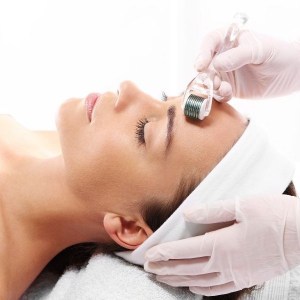Here at Cosmetic Courses, as well as our ever-popular Botox courses, we offer training in micro-needling, which has a large demand from our delegates and clientele.
Micro-needling is a way of improving the skin’s condition; it has the effect of helping the skin regenerate quickly by repairing itself rapidly. It also creates a smoother look to the skin and gives the effects of a brighter, younger glow.
The micro-needling uses microsurgical precision needles mounted around a sterile rolling device. The needles penetrate the skin and create microscopic channels or columns, which soon after heal. This cycle causes the skin to produce new collagen and elastin resulting in an enhanced look to the skin surface.
Micro-needling is mainly used to stimulate your skin which helps combat the appearance of fine lines, wrinkles, stretch marks and scarring caused by acne and chicken pox. Therefore micro-needling although primarily used on the face it can also be used on certain areas of the body.
The treatments itself usually takes between 10 and 30 minutes depending on the area being treated. We provide anaesthetic cream which is to be applied around 30 minutes prior to treatment to keep the pain minimal but you may still experience some discomfort. As it is a gradual enhancement not an instant effect, the results will start to develop around 4-8 weeks into the skin regeneration process.
Micro-needling has become very popular with the effects lasting over several months following a course of treatments, which is why we find it essential to offer our delegates training in micro-needling so they can offer this procedure effectively to their clients. Therefore micro-needling is a successful way to boost your skin and your career in the aesthetic industry.
To find out more about our micro-needling training courses, please contact us on 01844 390110 or email us at [email protected].
 prone to minor breakouts on a regular basis and was wondering whether
prone to minor breakouts on a regular basis and was wondering whether 






